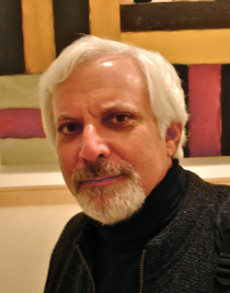Financial Firms Support CIFT’s Assessment of HRC Role in Market Stability
August 23, 2012
By David Leinweber
The Center for Innovative Financial Technology (CIFT) at Lawrence Berkeley National Laboratory has received $100,000 in research donations to study and promote the use of leading edge supercomputing and data intensive science for improving stability, regulation, and enforcement in U.S. markets.
The funds were contributed by financial firms: Tudor Investment Corporation of Greenwich CT, AJO Partners of Philadelphia, Infinium Capital Management of Chicago, and the NASDAQ/OMX Foundation, which is supporting both CIFT and an affiliated UC Berkeley computer scientist.
The Center for Innovative Financial Technologies in Berkeley Lab’s Computational Research Division was established to help build a bridge between the computational sciences and financial markets communities. CIFT was motivated in part by the 2010 Flash Crash, which was something of a wake-up call that complex markets, built on real computer networks, were capable of unanticipated and dangerous behavior.
Such a data-intensive computing challenge is similar to those addressed by Berkeley Lab’s Computing Sciences organization, which has extensive experience in using supercomputers to study large-scale problems and developing new methods to model processes and complex systems.
“There are many ways existing supercomputer computing systems are advantageous to regulation and enforcement. They remove all of the data size and computation speed limits for these functions. The need for improved analysis, simulation, and testing of market system integrity has been demonstrated repeatedly by a series of market mishaps,” said CIFT Director David Leinweber. “There is no algorithm certification of any sort today. In virtually all other complex systems, modeling and simulation play a central role. It’s not easy to do right, but with enough horsepower, it becomes feasible to consider.”
Marcos Lopez de Prado, Head of Global Quantitative Research at the Tudor Investment Corporation, commented on their ongoing work with CIFT, “Those responsible for market oversight could benefit from real-time ability to effectively monitor a complex system. Recent events, including the Flash Crash and other market disruptions, have highlighted the need to solve potential inadequacies in market structure and execution. Our research, in collaboration with CIFT, has shown that relatively simple analytics, like the HFPIN metric of order flow toxicity, can provide up to an hour’s advance warning of certain market anomalies.”
Ted Aronson, Managing Principal at AJO explained his support, “All market participants agree that market software needs to be more robust. We can’t tolerate the erosion of investor confidence. Bringing in the computational heavyweights to help the SROs and federal regulators broaden their collective abilities here is a valuable step. There was a story by Jason Zweig in the Wall Street Journal in May: ‘Could Computers Protect the Market from Computers?’ The answer would seem pretty obvious that nothing else can! We hope that the people building the next generation of market enforcement and regulation systems can take advantage of the opportunities here.”
Although Berkeley Lab is a Department of Energy-funded research institution, CIFT currently relies on non-government funding.
About Berkeley Lab
Founded in 1931 on the belief that the biggest scientific challenges are best addressed by teams, Lawrence Berkeley National Laboratory and its scientists have been recognized with 16 Nobel Prizes. Today, Berkeley Lab researchers develop sustainable energy and environmental solutions, create useful new materials, advance the frontiers of computing, and probe the mysteries of life, matter, and the universe. Scientists from around the world rely on the Lab’s facilities for their own discovery science. Berkeley Lab is a multiprogram national laboratory, managed by the University of California for the U.S. Department of Energy’s Office of Science.
DOE’s Office of Science is the single largest supporter of basic research in the physical sciences in the United States, and is working to address some of the most pressing challenges of our time. For more information, please visit energy.gov/science.










